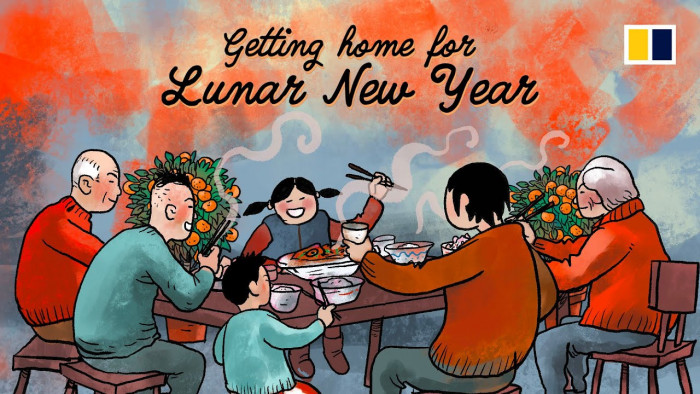Asian Festivals
Lunar New Year
Lunar New Year is the beginning of a calendar year whose months are cycles of the moon. The relevant calendar may be a purely lunar calendar or a lunisolar calendar
The following East Asian and Southeast Asian Lunar New Year celebrations are, or were, based on the traditional Chinese lunisolar calendar (occurring in late January or early February):[1]

Overview:https://www.youtube.com/watch?v=GVPHdFX9iHY&t=36s
Five Fun Facts:https://www.youtube.com/watch?v=1RShqSbLtDE
- Japanese New Year (prior to 1873) - Ryukyu (present)
https://www.youtube.com/watch?v=8iqejlGKHCM
- Korean New Year (Seollal)[2]
https://www.youtube.com/watch?v=AOnW8JQD1bM
- Mongolian New Year (Tsagaan Sar)
https://www.youtube.com/watch?v=Y_0leBX3Q_k
- Vietnamese New Year (Tết nguyên Đán)
https://www.youtube.com/watch?v=PBm7EQ0iD7k
Mid-autumn Festival
The Mid-Autumn Festival (中秋節) is a harvest festival celebrated notably by the Chinese and Vietnamese people. It relates to Chuseok (in Korea) and Tsukimi (in Japan). The festival is held on the 15th day of the 8th month of the lunar calendar with a full moon at night, corresponding to mid September to early October of the Gregorian calendar.[2]
Mooncakes, a rich pastry typically filled with sweet-bean or lotus-seed paste, are traditionally eaten during the festival.
SongKran Festival (World's Biggest Waterfight)
Songkran is a term derived from the Sanskrit word, saṅkrānti (or, more specifically, meṣa saṅkrānti)[clarification needed] and used to refer to the traditional New Year celebrated in Thailand, Laos, Cambodia, Myanmar, Sri Lanka, parts of northeast India, parts of Vietnam and Xishuangbanna, China.[2][3] It begins when the sun transits the constellation of Aries, the first astrological sign in the Zodiac, as reckoned by sidereal astrology.[4] It is related to the equivalent Hindu calendar-based New Year festivals in most parts of South Asia which are collectively referred to as Mesha Sankranti.
Holi Festival (Most Colorful Festival)
Songkran is a term derived from the Sanskrit word, saṅkrānti (or, more specifically, meṣa saṅkrānti)[clarification needed] and used to refer to the traditional New Year celebrated in Thailand, Laos, Cambodia, Myanmar, Sri Lanka, parts of northeast India, parts of Vietnam and Xishuangbanna, China.[2][3] It begins when the sun transits the constellation of Aries, the first astrological sign in the Zodiac, as reckoned by sidereal astrology.[4] It is related to the equivalent Hindu calendar-based New Year festivals in most parts of South Asia which are collectively referred to as Mesha Sankranti.
Hanami
Hanami (花見, "flower viewing") is the Japanese traditional custom of enjoying the transient beauty of flowers; flowers ("hana") are in this case almost always referring to those of the cherry ("sakura") or, less frequently, plum ("ume") trees.[1]From the end of March to early May, cherry trees bloom all over Japan,[2] and around the first of February on the island of Okinawa.[3] The blossom forecast (桜前線, sakura-zensen) "cherry blossom front" is announced each year by the weather bureau, and is watched carefully by those planning hanami as the blossoms only last a week or two.
Dano
Dano(Hangul: 단오), also called Surit-nal (Hangul: 수릿날), is a Korean traditional holiday that falls on the 5th day of the fifth month of the lunar Korean calendar. It is an official holiday in North Korea and one of the major traditional holidays in South Korea. South Korea has retained several festivals related to the holiday, one of which is Gangneung Dano Festival (Hangul: 강릉단오제) designated by UNESCO as a "Intangible Cultural Heritage of Humanity".[2]